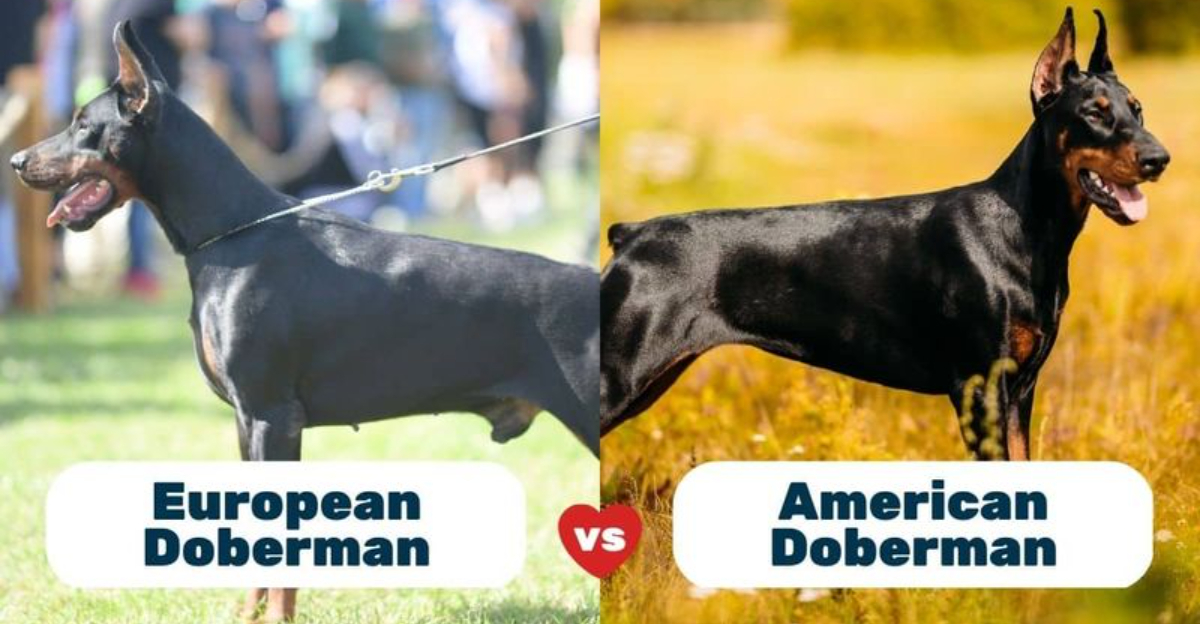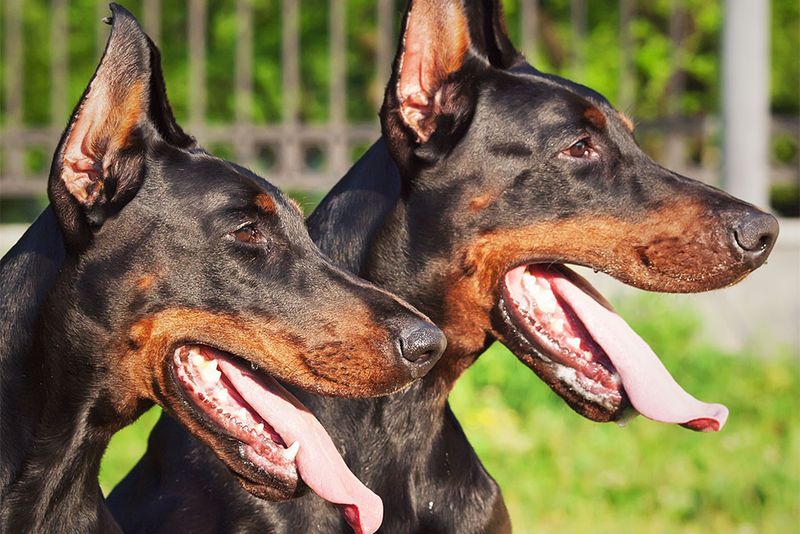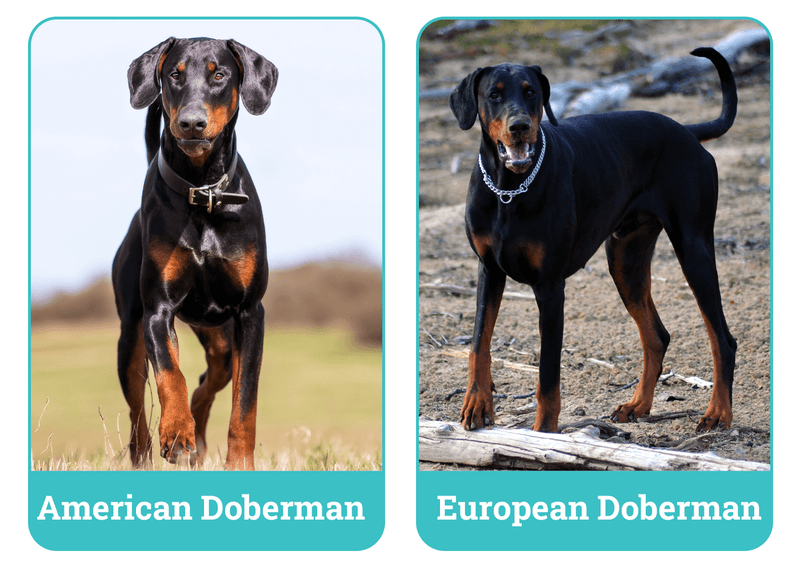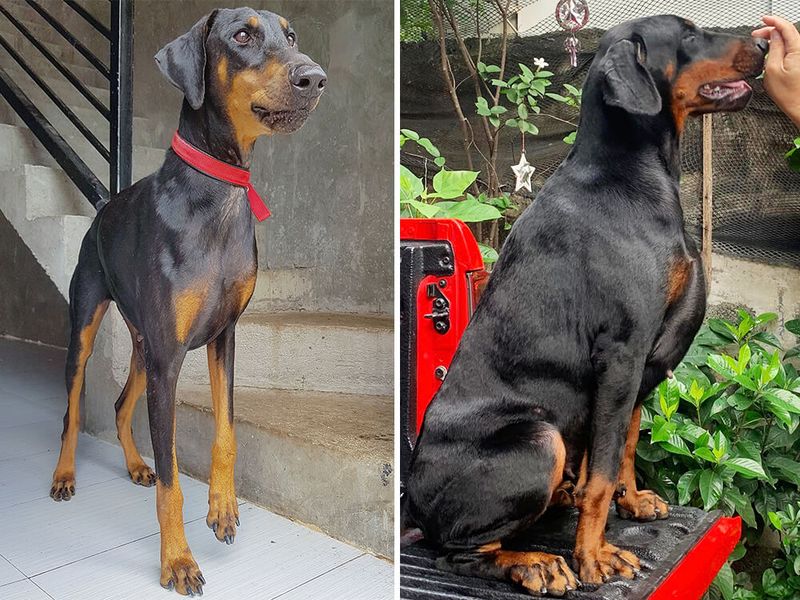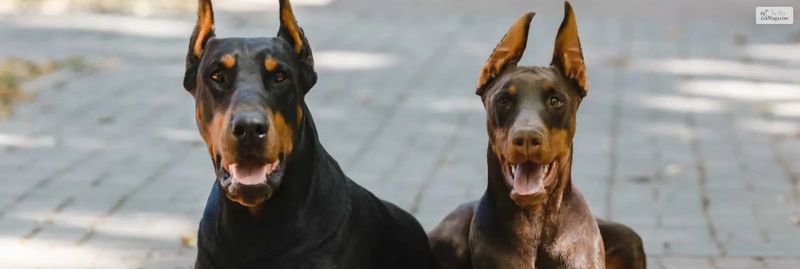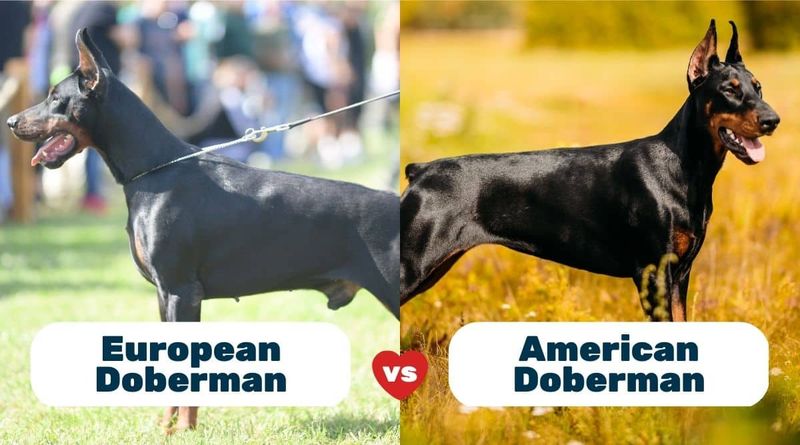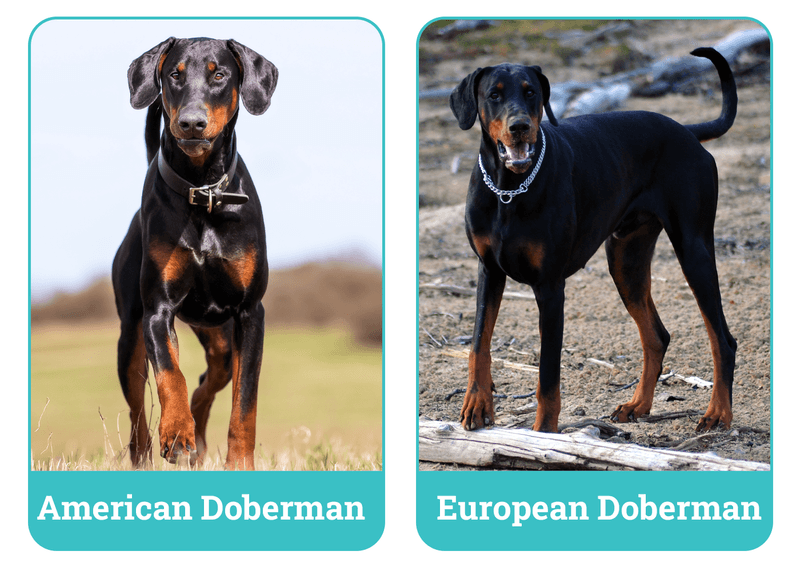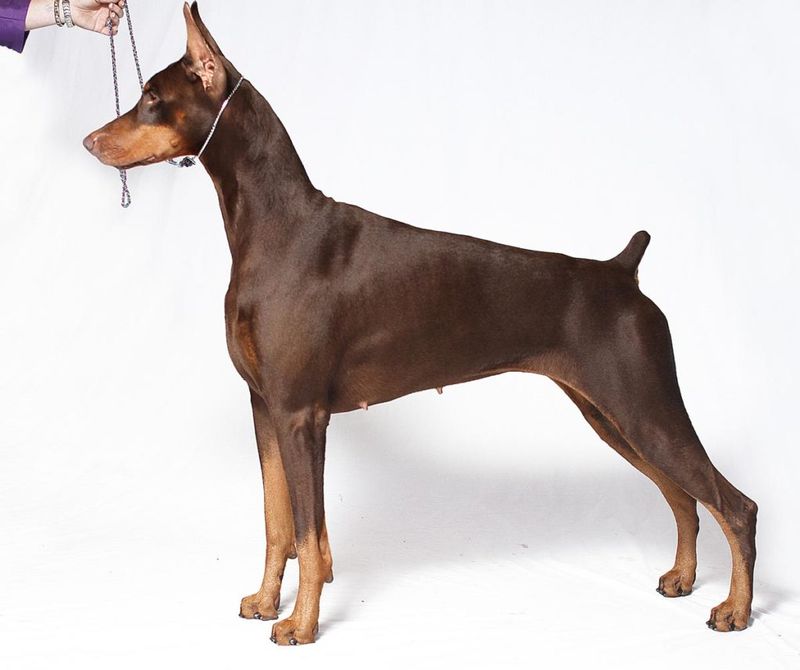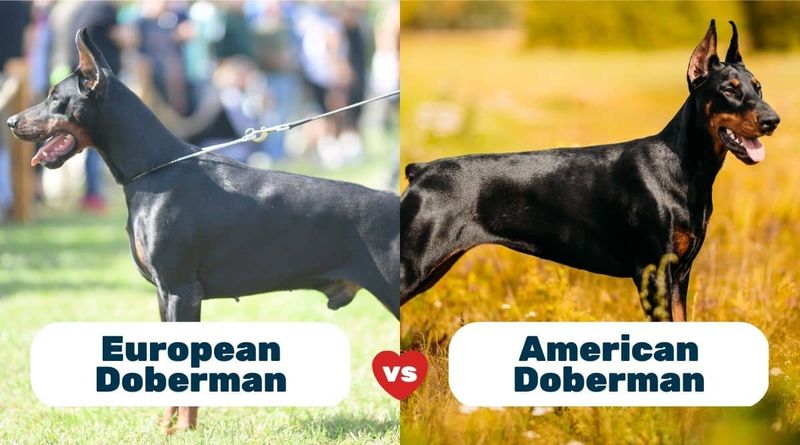Dobermans are a beloved breed known for their intelligence and loyalty. However, not all Dobermans are the same. In this blog post, we explore the differences between American and European Dobermans by examining 13 distinctive traits. By understanding these traits, you can decide which type of Doberman is best suited for your lifestyle.
Physical Build
American Dobermans are sleek and athletic, embodying a graceful appearance. Their build is usually leaner, accentuating agility and elegance. On the other hand, European Dobermans are more robust and muscular. They possess a stockier build, designed for strength and endurance.
While both breeds exude power, the European Doberman is often perceived as more imposing, thanks to its solid physique. The American counterpart, however, moves with a sense of elegance that is hard to ignore.
These physical distinctions are not just aesthetic; they reflect the different purposes for which these dogs were bred.
Temperament
The American Doberman is renowned for its calm and sociable nature, making it an ideal family pet. Their temperament is generally more laid-back compared to their European cousins.
European Dobermans, however, are known for their assertive and protective demeanor. They are often employed in roles requiring vigilance and protection. This trait makes them excellent guard dogs, but it requires experienced handling.
Understanding these differences ensures you choose a Doberman whose personality aligns with your lifestyle, whether it be an easy-going companion or a vigilant protector.
Energy Levels
High energy is a hallmark of both American and European Dobermans, but their energy levels manifest differently. American Dobermans are lively and playful, enjoying moderate exercise like jogging or playing fetch.
In contrast, European Dobermans have intense energy needs, often requiring rigorous physical activities to keep them satisfied. Their robust build supports activities like agility training and protection work.
These differences mean that while both breeds need regular exercise, European Dobermans may demand more time and effort to keep them engaged and content.
Training Needs
Training approaches differ significantly between the two. American Dobermans typically excel in obedience training, thanks to their eager-to-please nature. They respond well to positive reinforcement and enjoy learning new tricks.
European Dobermans, on the other hand, are often trained for protection work. Their training requires a firm, experienced hand to channel their strong protective instincts appropriately.
Choosing the right training approach for these Dobermans is crucial. While American Dobermans thrive in structured settings, European Dobermans need disciplined training to fulfill their potential as protectors.
Appearance and Coat
Both American and European Dobermans boast a short, sleek coat. However, subtle differences exist. American Dobermans have a finer, often glossier coat that complements their graceful physique.
European Dobermans, in contrast, tend to have a slightly thicker coat, offering additional protection in harsher climates. This characteristic, coupled with their robust build, gives them a more commanding presence.
These coat variations not only impact aesthetics but also offer practical benefits depending on the environment. Owners should consider these aspects when grooming and caring for their Dobermans.
Health Considerations
Health is a vital consideration when choosing between these breeds. American Dobermans are generally healthy but can be prone to certain genetic conditions like hip dysplasia and heart issues.
European Dobermans, while also generally healthy, may face challenges such as von Willebrand’s disease and certain orthopedic problems. These health considerations require diligent monitoring and regular vet visits.
Understanding potential health risks allows owners to provide the best care for their Dobermans, ensuring a happy, healthy life for their canine companions.
Work and Utility
The roles these Dobermans play in work and utility settings are distinct. American Dobermans are often found in therapy and service roles, thanks to their gentle demeanor and adaptability.
European Dobermans are frequently employed in police and military roles. Their assertiveness and strong protective instincts make them invaluable in high-stakes environments.
These differing roles highlight the versatility of the Doberman breed, showcasing their ability to excel in various environments. Selecting the right Doberman for work depends on their inherent strengths and temperament.
Socialization Needs
Socialization is critical for both breeds, but their needs vary. American Dobermans are generally more sociable and enjoy interacting with other dogs and people. They thrive in environments where they can play and socialize freely.
European Dobermans, meanwhile, often require controlled socialization settings. Their protective nature means they need careful introduction to new experiences and individuals.
Understanding these socialization needs ensures each Doberman can develop into a well-rounded and confident companion, able to navigate various social situations with ease.
Life Expectancy
Life expectancy is a crucial consideration for potential owners. Both American and European Dobermans have similar lifespans, typically ranging from 10 to 13 years.
Factors such as diet, exercise, and healthcare significantly impact their longevity. American Dobermans, with their lean build, often benefit from a balanced diet and regular exercise.
European Dobermans require similar care, with an emphasis on maintaining their muscular physique. Understanding the needs of each breed ensures they enjoy a long, healthy life, bringing joy to their families for years.
Size Differences
Size is a noticeable distinction between the two. American Dobermans tend to be slightly smaller, often weighing less than their European counterparts. This size difference contributes to their agile, athletic appearance.
European Dobermans, in contrast, are larger and more muscular, reflecting their breeding for strength and power. This robust size makes them particularly suited for roles requiring physical prowess.
Understanding these size differences is essential for potential owners, as it can influence space requirements, exercise needs, and personal preferences.
Dietary Needs
Diet plays a critical role in the health of both breeds. American Dobermans, with their lean build, thrive on a balanced diet that supports their agile lifestyle.
European Dobermans, being more muscular, often require a higher protein intake to maintain their robust physique. Tailoring a diet to suit their specific needs ensures optimal health and vitality.
These dietary considerations are vital for maintaining the fitness and well-being of Dobermans, ensuring they have the energy and strength to lead active lives.
History and Origin
The history of these Dobermans offers insights into their unique traits. American Dobermans were developed with an emphasis on companionship and versatility. This breeding focus is reflected in their friendly demeanor.
European Dobermans, in contrast, originated with a strong working background, bred for their protective and assertive nature. Their history as working dogs showcases their ability to excel in demanding roles.
Understanding these origins helps appreciate the characteristics of each breed, offering a glimpse into their development and purpose.
Popularity
Popularity varies between the two, driven by their distinct traits and roles. American Dobermans often gain recognition in show rings, admired for their elegance and grace. Their popularity is bolstered by their sociable nature.
European Dobermans, however, are celebrated in working dog circles. Their assertive demeanor and robust build earn them acclaim in roles demanding strength and protection.
These differing popularities highlight how each breed excels in its niche, celebrating the diversity within the Doberman family.
